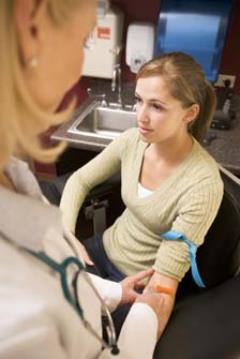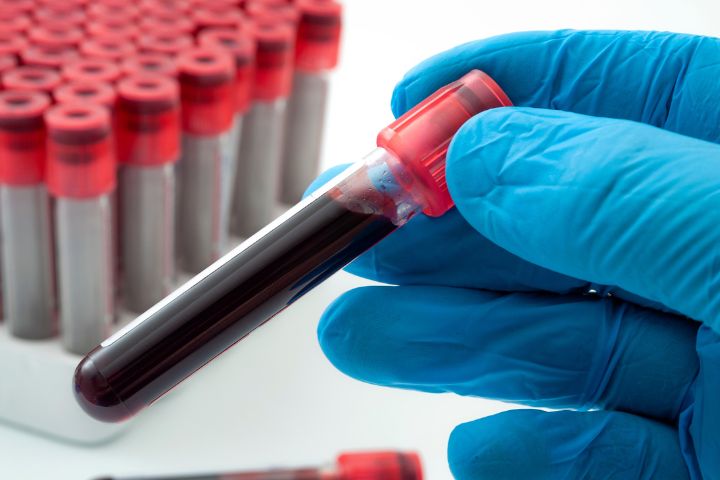Northeast Medical Institute - New Haven Campus Phlebotomy Course & Cna Class Can Be Fun For Everyone
Northeast Medical Institute - New Haven Campus Phlebotomy Course & Cna Class Can Be Fun For Everyone
Blog Article
The 10-Second Trick For Northeast Medical Institute - New Haven Campus Phlebotomy Course & Cna Class
Table of ContentsSome Of Northeast Medical Institute - New Haven Campus Phlebotomy Course & Cna ClassSome Known Facts About Northeast Medical Institute - New Haven Campus Phlebotomy Course & Cna Class.All about Northeast Medical Institute - New Haven Campus Phlebotomy Course & Cna ClassGetting The Northeast Medical Institute - New Haven Campus Phlebotomy Course & Cna Class To WorkThe Single Strategy To Use For Northeast Medical Institute - New Haven Campus Phlebotomy Course & Cna ClassThe Greatest Guide To Northeast Medical Institute - New Haven Campus Phlebotomy Course & Cna Class
The use of such tools must be gone along with by other infection prevention and control methods, and training in their usage.For setups with low resources, price is a motoring consider purchase of safety-engineered gadgets - CNA Classes. Where safety-engineered devices are not available, competent use of a needle and syringe serves. Unexpected exposure and particular information concerning an event ought to be taped in a register. Support services ought to be promoted for those who undergo accidental exposure.
Among the crucial pens of top quality of treatment in phlebotomy is the involvement and collaboration of the patient; this is equally beneficial to both the health employee and the person. Clear information either written or verbal need to be offered to each individual that goes through phlebotomy. Annex F offers sample message for describing the blood-sampling treatment to a person. In the blood-sampling area for an outpatient department or facility, provide a comfy reclining sofa with an arm remainder.
Top Guidelines Of Northeast Medical Institute - New Haven Campus Phlebotomy Course & Cna Class
Ensure that the signs for blood tasting are clearly specified, either in a composed method or in documented instructions (e.g. in a lab form). Whatsoever times, comply with the strategies for infection avoidance and control detailed in Table 2.2. Infection avoidance and control methods. Accumulate all the devices required for the procedure and location it within risk-free and easy reach on a tray or trolley, guaranteeing that all the products are clearly noticeable.
Introduce on your own to the person, and ask the person to state their complete name. Examine that the research laboratory kind matches the client's identification (i.e. match the person's information with the lab kind, to guarantee accurate identification).
Make the patient comfy in a supine position (ideally). Area a tidy paper or towel under the individual's arm. Talk about the examination to be performed (see Annex F) and acquire verbal approval. The person has a right to refuse an examination any time before the blood tasting, so it is necessary to guarantee that the client has understood the treatment.
The Northeast Medical Institute - New Haven Campus Phlebotomy Course & Cna Class Ideas
Expand the person's arm and evaluate the antecubital fossa or lower arm. Find a capillary of a good size that shows up, straight and clear. The diagram in Area 2.3, shows common positions of the vessels, however lots of variants are feasible. The typical cubital More Info vein lies in between muscle mass and is typically one of the most simple to pierce.
DO NOT insert the needle where veins are diverting, since this raises the possibility of a haematoma. The vein ought to be visible without applying the tourniquet. Finding the capillary will certainly aid in figuring out the right dimension of needle. Use the tourniquet about 45 finger sizes above the venepuncture site and re-examine the vein.
Haemolysis, contamination and presence of intravenous fluid and medicine can all change the outcomes (39. Nursing team and doctors may access main venous lines for samplings adhering to methods. However, samplings from main lines carry a threat of contamination or erroneous research laboratory examination results (https://www.dreamstime.com/gordonmarvin28_info). It is appropriate, however not perfect, to injure specimens when initial presenting an in-dwelling venous tool, prior to attaching the cannula to the intravenous fluids.
The Of Northeast Medical Institute - New Haven Campus Phlebotomy Course & Cna Class
Allow the area to dry. Failing to permit sufficient contact time enhances the risk of contamination. DO NOT touch the cleaned website; in specific, DO NOT place a finger over the vein to direct the shaft of the revealed needle. It the website is touched, repeat the sanitation. Execute venepuncture as adheres to.
Ask the client to develop a clenched fist so the veins are extra famous. Go into the vein swiftly at a 30 level angle or less, and proceed to introduce the needle along the vein at the most convenient angle of entrance - CNA Classes. Once adequate blood has actually been gathered, launch the tourniquet BEFORE taking out the needle
The Definitive Guide to Northeast Medical Institute - New Haven Campus Phlebotomy Course & Cna Class
Take out the needle gently and use mild stress to the website with a clean gauze or dry cotton-wool sphere. Ask the client to hold the gauze or cotton wool in position, with the arm prolonged and elevated. Ask the patient NOT to bend the arm, because doing so creates a haematoma.

Northeast Medical Institute - New Haven Campus Phlebotomy Course & Cna Class Fundamentals Explained
Where possible, keep the tubes in a shelf and relocate the rack in the direction of you - https://www.intensedebate.com/profiles/gordonmarvin28. If the sample tube does not have a rubber stopper, inject extremely gradually into the tube as minimizing the pressure and rate made use of to transfer the sampling lowers the threat of haemolysis.

Report this page